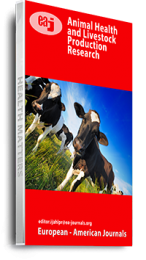The study was conducted to describe sheep and goat production practices in three Agro-ecological Woredas of Gedio zone southern, Ethiopia. A set of semi-structured questionnaire was used to collect information from 120 sheep and goat owners based on single-visit-interviews. 32.6% of them participate in crop production, 56.5% of them involved in both animal and crop production and 5% of them involved in crop production, animal production and off farm activity. Sheep flock in the study sites were significantly different; and 5.63 in wenago and 6.97 Walema sites and 3.4 kochera. Major feed resources were grazing (33.5%). The highest mortality rate occurred in suckling flock (16.24% lambs; 16.3 kids %), young flock (9.64 %lambs; 13.24% kids) and breeding females (ewes 12.06% and does 14.1%) in all study sites. Sheep and goat production in the studied areas was constrained by different problems; prioritized the major constraints as; availability and cost of feeds, limitation of land for the expansion of production and poor extension services. Integration of sheep and goat with other agricultural practices is the dominant systems in the area.
Keywords: Feeding, Marketing, Mortality, Sheep, fattening, goat, grazing

